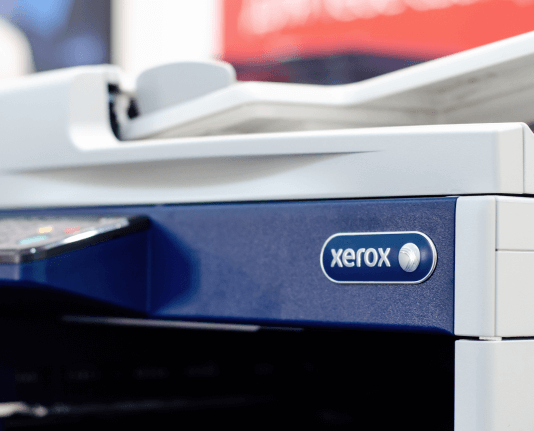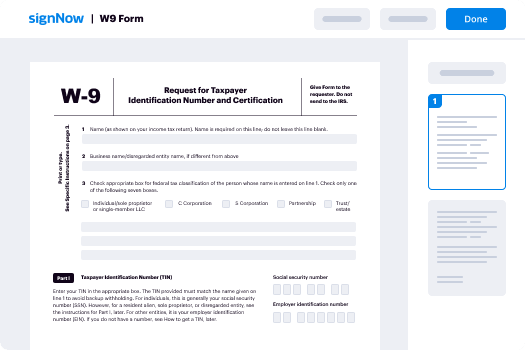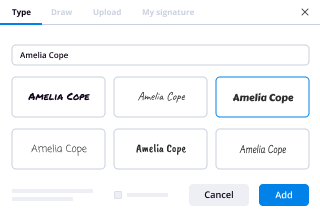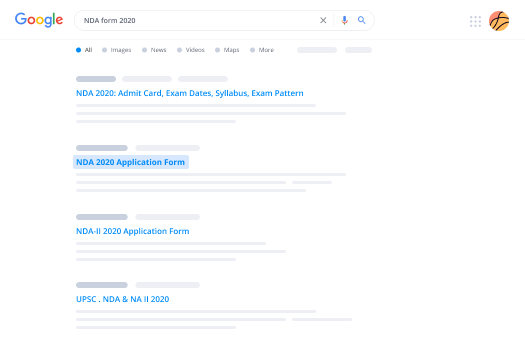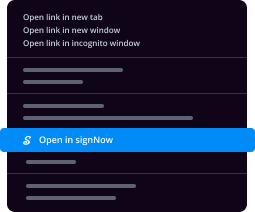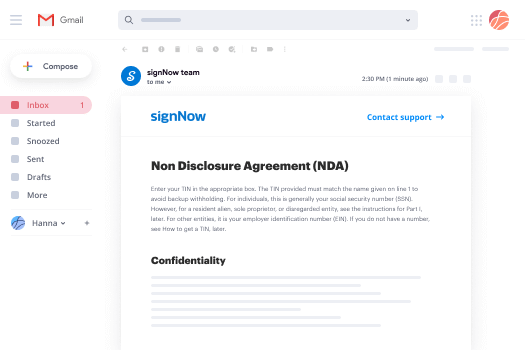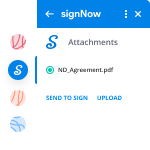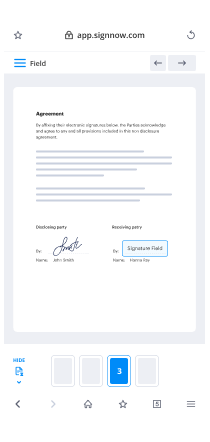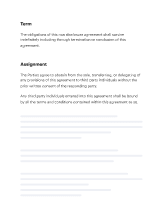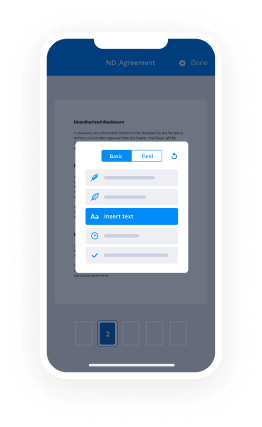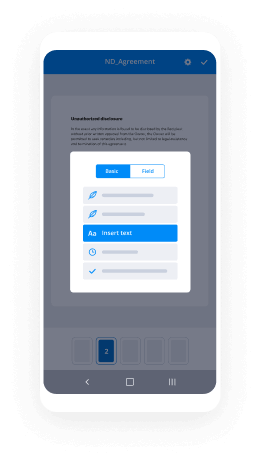Sign PPT for Administrative Safe
Make the most out of your eSignature workflows with airSlate SignNow
Extensive suite of eSignature tools
Robust integration and API capabilities
Advanced security and compliance
Various collaboration tools
Enjoyable and stress-free signing experience
Extensive support
Keep your eSignature workflows on track
Our user reviews speak for themselves






Comprehending administration presentation for airSlate SignNow advantages
In the contemporary digital environment, a proficient administration presentation can showcase the advantages of utilizing airSlate SignNow for electronic signature solutions. This robust platform allows enterprises to optimize document processes, boost productivity, and enhance return on investment with its comprehensive feature set, all while providing clear pricing and outstanding assistance.
Instructions to capitalize on administration presentation with airSlate SignNow advantages
- Launch your chosen web browser and visit the airSlate SignNow site.
- Create a complimentary trial account or log in if you already possess one.
- Select and upload the document you intend to sign or send for signatures.
- If this document is one you will utilize regularly, think about saving it as a template.
- Access the uploaded file to make required modifications, such as adding fillable fields or including essential information.
- Affix your signature to the document and specify where recipients should sign.
- Click 'Continue' to set up and send an eSignature invitation.
By adhering to these instructions, you can efficiently employ airSlate SignNow to enhance your document signing procedure. This platform is tailored to meet the requirements of small to mid-sized enterprises, ensuring an intuitive experience that adapts as you grow.
Begin transforming your document workflows today! Discover airSlate SignNow and see how it can benefit your business with its user-friendly interface and committed support.
How it works
Rate your experience
-
Best ROI. Our customers achieve an average 7x ROI within the first six months.
-
Scales with your use cases. From SMBs to mid-market, airSlate SignNow delivers results for businesses of all sizes.
-
Intuitive UI and API. Sign and send documents from your apps in minutes.
A smarter way to work: —how to industry sign banking integrate
FAQs
-
What features does airSlate SignNow offer for creating administration PPTs?
airSlate SignNow provides an array of features that streamline the creation of administration PPTs. You can easily upload, edit, and eSign documents, ensuring that all your administrative presentations are not only professional but also compliant with legal standards. The platform allows for collaboration, so teams can work together on administration PPTs seamlessly.
-
How can airSlate SignNow improve my administration PPT workflow?
By using airSlate SignNow, you can signNowly enhance your administration PPT workflow. The platform automates document processes, reducing the time spent on manual tasks. This efficiency allows you to focus on creating impactful presentations rather than getting bogged down in paperwork.
-
Is airSlate SignNow suitable for small businesses creating administration PPTs?
Yes, airSlate SignNow is an excellent choice for small businesses looking to create administration PPTs. Its user-friendly interface and cost-effective pricing make it accessible for businesses of all sizes. Small teams can leverage its powerful features without breaking the bank.
-
What is the pricing structure for airSlate SignNow when creating administration PPTs?
airSlate SignNow offers flexible pricing plans designed to cater to different needs, including those focused on creating administration PPTs. You can choose from monthly or annual subscriptions, which provide access to all features necessary for efficient document management. This ensures you only pay for what you need.
-
Are there any integrations available for airSlate SignNow to aid in administration PPT creation?
Absolutely! airSlate SignNow integrates seamlessly with popular tools and software that can enhance the creation of your administration PPTs. Whether you use Google Workspace, Microsoft Office, or CRM systems, these integrations streamline your workflow and improve productivity.
-
How does airSlate SignNow ensure the security of my administration PPTs?
Security is a top priority for airSlate SignNow, especially when handling sensitive administration PPTs. The platform utilizes advanced encryption methods to protect your documents during storage and transmission. Additionally, it complies with industry standards to ensure your information remains confidential.
-
Can I track the status of my administration PPT documents with airSlate SignNow?
Yes, airSlate SignNow allows you to track the status of your administration PPT documents in real-time. You can see who has viewed or signed your documents, which helps you manage approvals and deadlines efficiently. This feature is particularly useful for keeping your team aligned.
-
Malaysia country information?
PEOPLEThe early Buddhist Malay kingdom of Srivijaya, based at what is now Palembang, Sumatra, dominated much of the Malay peninsula from the 9th to the 13th centuries AD. The powerful Hindu kingdom of Majapahit, based on Java, gained control of the Malay peninsula in the 14th century. Conversion of the Malays to Islam, beginning in the early 14th century, accelerated with the rise of the state of Malacca under the rule of a Muslim prince in the 15th century. Malacca was a major regional commercial center, where Chinese, Arab, Malay, and Indian merchants traded precious goods.Drawn by this rich trade, a Portuguese fleet conquered Malacca in 1511, marking the beginning of European expansion in Southeast Asia. The Dutch ousted the Portuguese from Malacca in 1641. The British obtained the island of Penang in 1786 and temporarily controlled Malacca with Dutch acquiescence from 1795 to 1818 to prevent it from falling to the French during the Napoleonic war. The British gained lasting possession of Malacca from the Dutch in 1824, through the Anglo-Dutch treaty, in exchange for territory on the island of Sumatra in what is today Indonesia.In 1826, the British settlements of Malacca, Penang, and Singapore were combined to form the Colony of the Straits Settlements. From these strongholds, in the 19th and early 20th centuries the British established protectorates over the Malay sultanates on the peninsula. During their rule the British developed large-scale rubber and tin production and established a system of public administration. British control was interrupted by World War II and the Japanese occupation from 1941 to 1945.Popular sentiment for independence swelled during and after the war. The territories of peninsular Malaysia joined together to form the Federation of Malaya in 1948 and eventually negotiated independence from the British in 1957. Tunku Abdul Rahman became the first prime minister. In 1963 the British colonies of Singapore, Sarawak, and Sabah joined the Federation, which was renamed Malaysia. Singapore's membership was short-lived, however; it left in 1965 and became an independent republic.Neighboring Indonesia objected to the formation of Malaysia and began a program of economic, political, diplomatic, and military "confrontation" against the new country in 1963, which ended only after the fall of Indonesia's President Sukarno in 1966. Internally, local communists, nearly all Chinese, carried out a long, bitter insurgency both before and after independence, prompting the imposition of a state of emergency from 1948 to 1960. Small bands of guerrillas remained in bases along the rugged border with southern Thailand, occasionally entering northern Malaysia. These guerrillas finally signed a peace accord with the Malaysian Government in December 1989. A separate, small-scale communist insurgency that began in the mid-1960s in Sarawak also ended with the signing of a peace accord in October 1990.Malaysia maintains an embassy in the U.S. at 3516 International Court NW, Washington, DC 20008, tel. (202) 572-9700; a Consulate General at 550 South Hope Street, Suite 400, Los Angeles, CA 90071, tel. (213) 892-1238; and a Consulate General at 313 East 43rd Street, New York City, NY 10017, tel. (212) 490-2722/23.POLITICAL CONDITIONSSince it became independent, Malaysia's economic record has been one of Asia's best. Real gross domestic product (GDP) grew by an average of 6.5% per year from 1957 to 2005. Performance peaked in the early 1980s through the mid-1990s, as the economy experienced sustained rapid growth averaging almost 8% annually. High levels of foreign and domestic investment played a signNow role as the economy diversified and modernized. Once heavily dependent on primary products such as rubber and tin, Malaysia today is a middle-income country with a multi-sector economy based on services and manufacturing. Malaysia is one of the world's largest exporters of semiconductor devices, electrical goods, and information and communication technology (ICT) products.The government has taken an active role in guiding the nation's economic development. Malaysia's New Economic Policy (NEP), first established in 1971, sought to eradicate poverty and to enhance the economic standing of ethnic Malays and other indigenous peoples (collectively known as "bumiputeras"). One NEP goal was to expand the share of corporate equity owned by ethnic Malays. In June 1991, after the NEP expired, the government unveiled its National Development Policy, which contained many of the NEP's goals. In April 2001, the government released a new plan, the "National Vision Policy," to guide development over the period 2001-2010. The National Vision Policy targets education for budget increases and seeks to refocus the economy toward higher-technology production. The stated goal is for Malaysia to be a fully developed economy by 2020.The Malaysian economy went into sharp recession in 1997-1998 during the Asian financial crisis, which affected countries throughout the region, including South Korea, Indonesia, and Thailand. Malaysia's GDP contracted by more than 7% in 1998. Malaysia narrowly avoided a return to recession in 2001 when its economy was negatively impacted by the bursting of the dot-com bubble (which hurt the ICT sector) and slow growth or recession in many of its important export markets.In July 2005, the government removed the 7-year old peg linking the ringgit's value to the U.S. dollar at an exchange rate of RM 3.8/U.S.$1.0. The dollar peg was replaced by a managed float against an undisclosed basket of currencies. The new exchange rate policy was designed to keep the ringgit more broadly stable and to avoid uncertain currency swings which could harm exports.FOREIGN RELATIONSThe United States and Malaysia share a diverse and expanding partnership. Economic ties are robust. The United States is Malaysia's largest trading partner and Malaysia is the tenth-largest trading partner of the U.S. Annual two-way trade amounts to $49 billion. The United States and Malaysia launched negotiations for a bilateral free trade agreement (FTA) in June 2006.The United States is the largest foreign investor in Malaysia. American companies are particularly active in the energy, electronics, and manufacturing sectors. The cumulative value of U.S. private investment in Malaysia exceeds $10 billion.The United States and Malaysia enjoy strong security cooperation. Malaysia hosts the Southeast Asia Regional Center for Counterterrorism (SEARCCT), where over 1,100 officials from multiple countries have received training. The United States is the largest foreign provider of training courses at the center. The U.S. and Malaysia share a strong military-to-military relationship with numerous exchanges, training, joint exercises, and visits.Secretary of State Condoleezza Rice visited Kuala Lumpur in July 2006.The U.S. Embassy in Malaysia is located at 376 Jalan Tun Razak, 50400 Kuala Lumpur (tel. 60-3-2168-5000, fax 60-3-2142-2207).TRAVEL AND BUSINESS INFORMATIONThe U.S. Department of State's Consular Information Program advises Americans traveling and residing abroad through Consular Information Sheets, Public Announcements, and Travel Warnings. Consular Information Sheets exist for all countries and include information on entry and exit requirements, currency regulations, health conditions, safety and security, crime, political disturbances, and the addresses of the U.S. embassies and consulates abroad. Public Announcements are issued to disseminate information quickly about terrorist threats and other relatively short-term conditions overseas that pose signNow risks to the security of American travelers. Travel Warnings are issued when the State Department recommends that Americans avoid travel to a certain country because the situation is dangerous or unstable.For the latest security information, Americans living and traveling abroad should regularly monitor the Department's Bureau of Consular Affairs Internet web site at http://www.travel.state.gov, where the current Worldwide Caution, Public Announcements, and Travel Warnings can be found. Consular Affairs Publications, which contain information on obtaining passports and planning a safe trip abroad, are also available at http://www.travel.state.gov. For additional information on international travel, see http://www.usa.gov/Citizen/Topic....The Department of State encourages all U.S citizens traveling or residing abroad to register via the State Department's travel registration website or at the nearest U.S. embassy or consulate abroad. Registration will make your presence and whereabouts known in case it is necessary to contact you in an emergency and will enable you to receive up-to-date information on security conditions.Emergency information concerning Americans traveling abroad may be obtained by calling 1-888-407-4747 toll free in the U.S. and Canada or the regular toll line 1-202-501-4444 for callers outside the U.S. and Canada.The National Passport Information Center (NPIC) is the U.S. Department of State's single, centralized public contact center for U.S. passport information. Telephone: 1-877-4USA-PPT (1-877-487-2778). Customer service representatives and operators for TDD/TTY are available Monday-Friday, 7:00 a.m. to 12:00 midnight, Eastern Time, excluding federal holidays.Travelers can check the latest health information with the U.S. Centers for Disease Control and Prevention in Atlanta, Georgia. A hotline at 877-FYI-TRIP (877-394-8747) and a web site at http://www.cdc.gov/travel/index.htm give the most recent health advisories, immunization recommendations or requirements, and advice on food and drinking water safety for regions and countries. A booklet entitled "Health Information for International Travel" (HHS publication number CDC-95-8280) is available from the U.S. Government Printing Office, Washington, DC 20402, tel. (202) 512-1800.Prime Minister: Datuk Seri Najib Tun Razak (2009)Land area: 126,853 sq mi (328,549 sq km); total area: 127,316 sq mi (329,750 sq km)Population (2014 est.): 30,073,353 (growth rate: 1.47%); birth rate: 20.06/1000; infant mortality rate: 13.69/1000; life expectancy: 74.52Capital and largest city (2011 est.): Kuala Lumpur, 1.556 millionOther large cities: Klang 1.19 million; Johor Bahru 1.045 million (2011)Monetary unit: RinggitGovernmentConstitutional monarchy.HistoryThe ancestors of the people that now inhabit the Malaysian peninsula first migrated to the area between 2500 and 1500 B.C. Those living in the coastal regions had early contact with the Chinese and Indians; seafaring traders from India brought with them Hinduism, which was blended with the local animist beliefs. As Muslims conquered India, they spread the religion of Islam to Malaysia. In the 15th century, Islam acquired a firm hold on the region when the Hindu ruler of the powerful city-state of Malacca, Parameswara Dewa Shah, converted to Islam.British and Dutch interest in the region grew in the 1800s, with the British East India Company's establishment of a trading settlement on the island of Singapore. Trade soared, with Singapore's population growing from only 5,000 in 1820 to nearly 100,000 in just 50 years. In the 1880s, Britain formally established protectorates in Malaysia. At about the same time, rubber trees were introduced from Brazil. With the mass production of automobiles, rubber became a valuable export, and laborers were brought in from India to work the rubber plantations.Forming the Independent State of MalaysiaFollowing the Japanese occupation of Malaysia during World War II, a growing nationalist movement prompted the British to establish the semiautonomous Federation of Malaya in 1948. But Communist guerrillas took to the jungles to begin a war of national liberation against the British, who declared a state of emergency to quell the insurgency, which lasted until 1960.The independent state of Malaysia came into existence on Sept. 16, 1963, as a federation of Malaya, Singapore, Sabah (North Borneo), and Sarawak. In 1965, Singapore withdrew from the federation to become a separate nation. Since 1966, the 11 states of former Malaya have been known as West Malaysia, and Sabah and Sarawak as East Malaysia.By the late 1960s, Malaysia was torn by rioting directed against Chinese and Indians, who controlled a disproportionate share of the country's wealth. Beginning in 1968, it was the government's goal to achieve greater economic balance through a national economic policy.Economic Reform and GrowthIn the 1980s, Dr. Mohamad Mahathir succeeded Datuk Hussein as prime minister. Mahathir instituted economic reforms that would transform Malaysia into one of the so-called Asian Tigers. Throughout the 1990s, Mahathir embarked on a massive project to build a new capital from scratch in an attempt to bypass congested Kuala Lumpur.Beginning in 1997 and continuing through the next year, Malaysia suffered from the Asian currency crisis. Instead of following the economic prescriptions of the International Monetary Fund and World Bank, the prime minister opted for fixed exchange rates and capital controls. In late 1999, Malaysia was on the road to economic recovery, and it appeared Mahathir's measures were working.Abdullah Badawi Tries to Reduce Government CorruptionIn Oct. 2003, Mahathir retired after 22 years in office. His rule witnessed enormous economic growth, but was also characterized by repression and human rights abuses. Malaysia's new prime minister, Abdullah Badawi, had a more statesmanlike reputation, and in his first year in office he made headway on reducing corruption and instituting reforms. In March 2004, the ruling National Front coalition won an astonishing 90% of parliamentary seats, and Abdullah was reelected .The governing coalition under Prime Minister Badawi suffered a stunning defeat in March 2008's parliamentary elections. Opposition parties quadrupled their representation in Parliament, and Badawi's coalition, although it won 136 of 222 seats in Parliament, lost its two-thirds majority, which is necessary to amend the constitution, and control of five state assemblies. It was the worst showing for the National Front coalition in four decades. Shortly after the election, Badawi trimmed his cabinet, removing several ministers who had been accused of corruption, and appointed a prominent lawyer to oversee judicial reform.Popular Opposition Leader Fights Sodomy ChargesLeading opposition figure Anwar Ibrahim was arrested and jailed on suspicion of sodomy in July 2008—for a second time. Ten years earlier, when he was serving as deputy prime minister, he was convicted of sodomy and corruption. The conviction was overturned after he spent six years in jail. Anwar denied the charges both times, claiming to have been set up by the government—allegations that had a broad base of supporters, both domestically and abroad. Prior to each arrest, Anwar's political challenge to the governing party had been gaining momentum. Indeed, days before his most recent arrest, he had announced plans to run for Parliament. In August 2008, Anwar won a by-election to return to Parliament after a 10-year absence. He defeated the government party's candidate, 31,196 to 15,524. After a two-year trial, Anwar was acquitted of the sodomy charge in January 2012. The government appealed the acquital, and it was overturned in May 2014. He began a five-year jail sentence in February 2015. His daughter, Nurul Izzah Anwar, also an opposition politician, was arrested and charged with sedition in March 2015 for a speech she gave in Parliament defending her father and denouncing the ruling.In March 2009, the ruling United Malays National Organization chose Najib Razak to succeed Abdullah Badawi as Prime Minister of the nation and leader of the party. Razak has promised to make big changes in the ruling party, which is facing renewed competition. However, Razak is largely viewed as an insider who is too entrenched in party politics to follow through on his promises of reform.Prime Minister Dissolves ParliamentOn April 3, 2013, Prime Minister Najib Razak dissolved parliament and called for a general election in hopes reestablishing his National Front coalition’s mandate, which has been in place for almost six decades. Despite winning less than 47% of the popular vote, Najib’s coalition took 133 out of 222 parliamentary seats (district lines are drawn in the coalition’s favor). It was the coalition's worst-ever electoral performance in a general election. Anwar Ibrahim's three-party alliance, Pakatan Rakyat, took 89 seats—its best showing to date. It had hoped to unseat the ruling party with a pledge of a cleaner government. Anwar alleged the election was rigged, accusing the government of dispatching as many as 40,000 "dubious" voters to cast ballots in tight races.Malaysia Airlines Flight DisappearsMalaysia Airlines Flight MH370, carrying 239 people, lost contact with ground controllers en route to Beijing, China, on March 8, 2014. The plane disappeared between Malaysia and Vietnam. Two days later, rescue crews continued to search for the missing plane. Meanwhile, officials reported that two passengers on board MH370 had used stolen passports and booked their tickets at the same time. All causes for what happened to the jetliner were being investigated, including hijacking.For days, rescue crews searched for the plane and investigators hunted for clues about what happened. Finally, on March 24, Malaysia's Prime Minister Najib Razak announced that satellite data confirmed that the plane went down in the southern Indian Ocean, a remote location far off course. Many questions remained unanswered, including why the plane ended up where it did and why it went down.Inmarsat, a British company, analyzed satellite data and the plane's flight path and determined the area where the plane went down. An Australian Air Force plane reported seeing "a grey or green circular object" and "an orange rectangular object" in the area, but the Australian government did not confirm that the debris was from the missing plane. The search for the plane continued throughout 2014 and 2015.In Aug. 2015, Prime Minister Najib Razak announced that investigators had confirmed that a portion of a right wing flaperon found the previous month on Réunion, an island in the western Indian Ocean, was from Flight MH370. The investigators were from France, Malaysia, Boeing, and the U.S. National Transportation Safety Board. Initially, French officials stated that there was a "high probability" that the object was from Flight MH370. However, by Sept., the officials had uncovered and linked the serial numbers on the flapper to Flight MH370 and could say "with certainty" that it was a match.Also in August, the Malaysian Anti-Corruption Commission reported that the $2.6 billion in Prime Minister Razak's account had come from donations and not from state-investment funding. However, the commission did not share where the donations came from or why they had been transferred to Razak. On Aug. 28, Anina Saaduddin, a member of Razak's own political party, filed a civil suit against him. The suit alleged that he defrauded the party and its members by failing to disclose that he'd received the donated funds and that he'd failed in his duties as party trustee.
Trusted esignature solution— what our customers are saying
Get legally-binding signatures now!
Related searches to Sign PPT for Administrative Safe
Frequently asked questions
How do i add an electronic signature to a word document?
How to create an electronic signature pic?
Attach a digital arrow in a pdf to indicate where to sign?
Get more for Sign PPT for Administrative Safe
- How Do I eSignature Pennsylvania Real Estate Document
- How Do I eSignature Texas Real Estate Document
- How Can I eSignature Colorado Courts PDF
- Can I eSignature Louisiana Courts Document
- How To Electronic signature Arkansas Banking Document
- How Do I Electronic signature California Banking Form
- How Do I eSignature Michigan Courts Document
- Can I eSignature Missouri Courts Document
Find out other Sign PPT for Administrative Safe
- City of carson garage yard rummage sale application limitations form
- Form ct 19it ct gov connecticuts official state
- 1121 form
- Michigan workers compensation placement facility form
- Ach authorization form payroll checkmark com
- Form mv 753 authorization for release of motor vehicle
- Quilt show entry form shipshewana quilt festival webflow
- Getting kindergarten ready a live workshop for teachers form
- Tanf application form
- Domestic partnership 495568289 form
- Medicare worksheet form
- Nemt physician certification statement form
- Pca narcotic agreement pain control associates form
- Residential parking permit certification of possession annapolis form
- Medication self carry permission form harford county public hcps
- Bcyf city hall childcare waitlist application cityofboston form
- Bcyf city hall childcare waitlist application 25 form
- Bufi vdh virginia gov form
- Affidavit regarding limited partnership limited liability form
- Account information and contractor registration cityoftulsa

